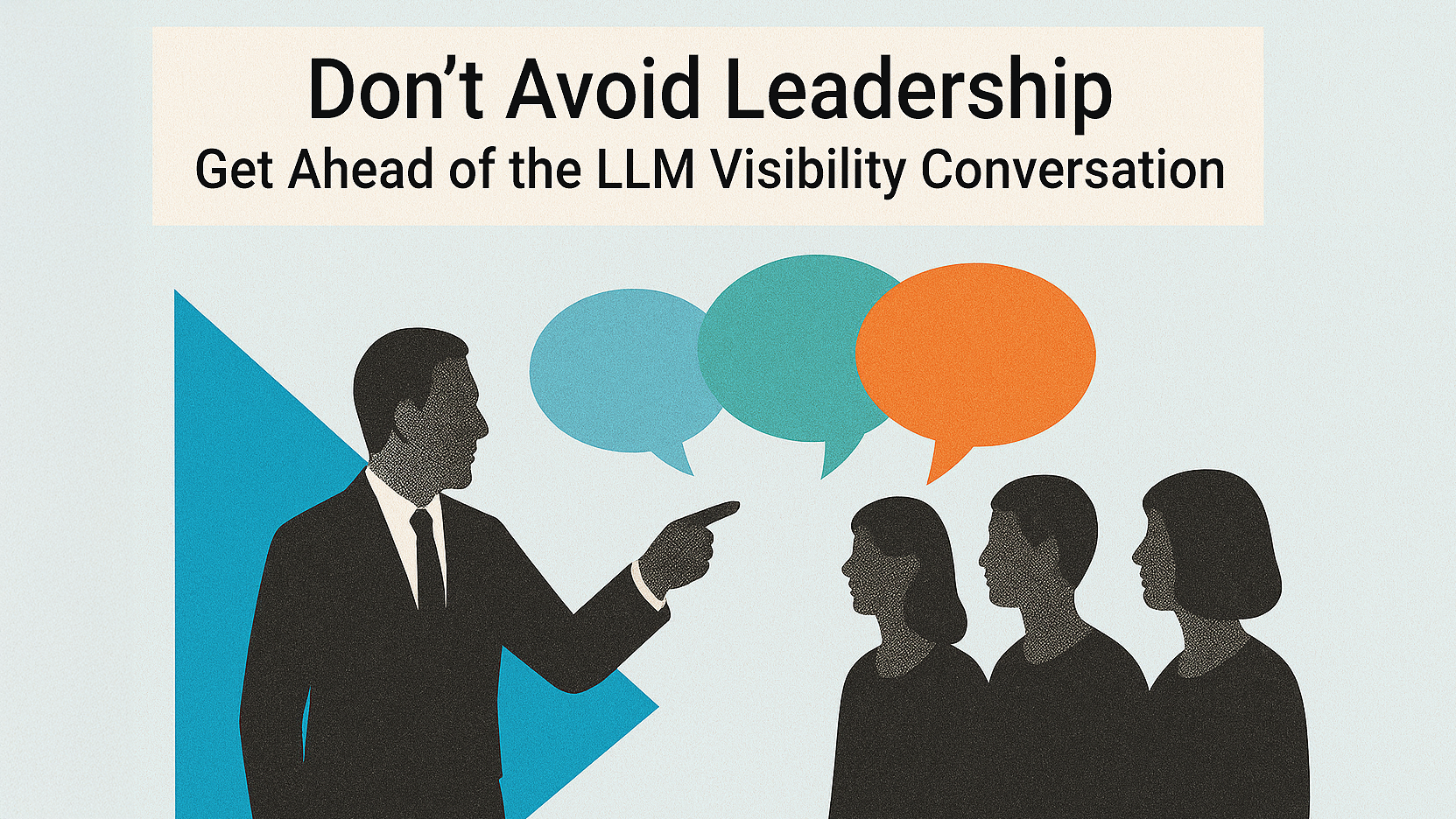How to become an industry thought leader by building content pillars
Build authority in your niche with a strategic approach to content creation. Explore how content pillars can enhance SEO and user experience.
Establishing yourself as an authority in your niche can be a game-changer for growing your business.
By positioning your website as a trusted source of information, you’ll attract more visitors and significantly boost your conversion rates.
The more high-quality content you create, the more traffic you’ll draw – and when your expertise shines through, visitors are more likely to trust your brand and make a purchase.
People naturally gravitate toward businesses that empower them with valuable insights to make informed decisions.
The good news? Any business can achieve this level of influence with well-researched, strategic content.
This article explains how to transform your website into an industry thought leader using content pillars guided by Semrush’s Keyword Strategy Builder.
What are content pillars?
Content pillars are pillars of website content that cover all aspects of a particular topic. This approach provides a 360-degree understanding of the subject.
For example, imagine you’re an ecommerce retailer selling camping gear. One approach is to have a website that simply lists products with little to no added expertise.
Such a site would struggle with conversion rates and likely compete solely on price, offering little value or education to customers.
Alternatively, you could create a website that guides consumers in choosing the best camping gear for their needs.
By helping them navigate this decision-making process, you’ll build trust and create a better overall experience, making customers more likely to choose you – even if your prices are slightly higher.
This approach can be implemented by building content pillars – a strategy that thoroughly explores a specific topic by covering various subtopics to support the customer decision-making process.
Each pillar includes sub-pillar content that delves deeper into individual categories, supported further by additional content for each sub-pillar.
The structure is broken out like the below:
- Content pillar (main theme).
- Sub-pillar (each pillar will have multiple sub-pillars).
- Supporting content (each sub-pillar will have multiple pages of supporting content, going into detail on each one)
- Sub-pillar (each pillar will have multiple sub-pillars).
It’s important to know that each website can have multiple pillars, depending on how broad you want to cover the knowledge.
How to develop a content pillar strategy with the Semrush Keyword Strategy Builder
To start, it’s helpful to identify the general pillar you want to create. For example, we want to build a pillar for tents.
Within Semrush, we can enter seed keywords within the Keyword Strategy Builder to help identify sub-pillars and supporting content.
In this case, let’s say I want to create content around tent materials, accessories, maintenance and cleaning.
With that, I’ll enter these keywords into the Keyword Strategy Builder.
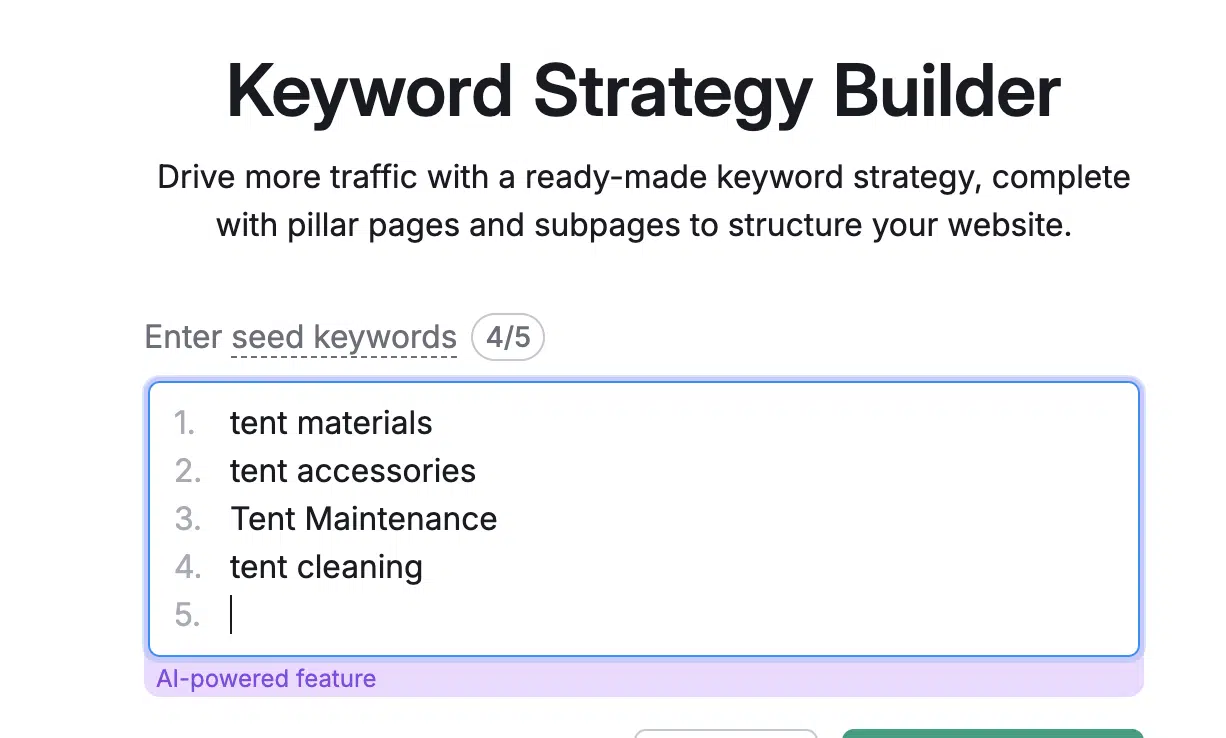
After several minutes, Semrush will provide a super helpful topic overview.
I prefer the topical overview over the table view as it gives a nice visual overview of different sub-pillars and content we could write about.
For example, see the suggested output, which includes 10 topics (i.e., sub-pillar) and up to 287 pages of content.
Now, this doesn’t mean we will write about all 10 topics and every page suggested; rather, we’ll review and pick the ones we feel are most valuable.
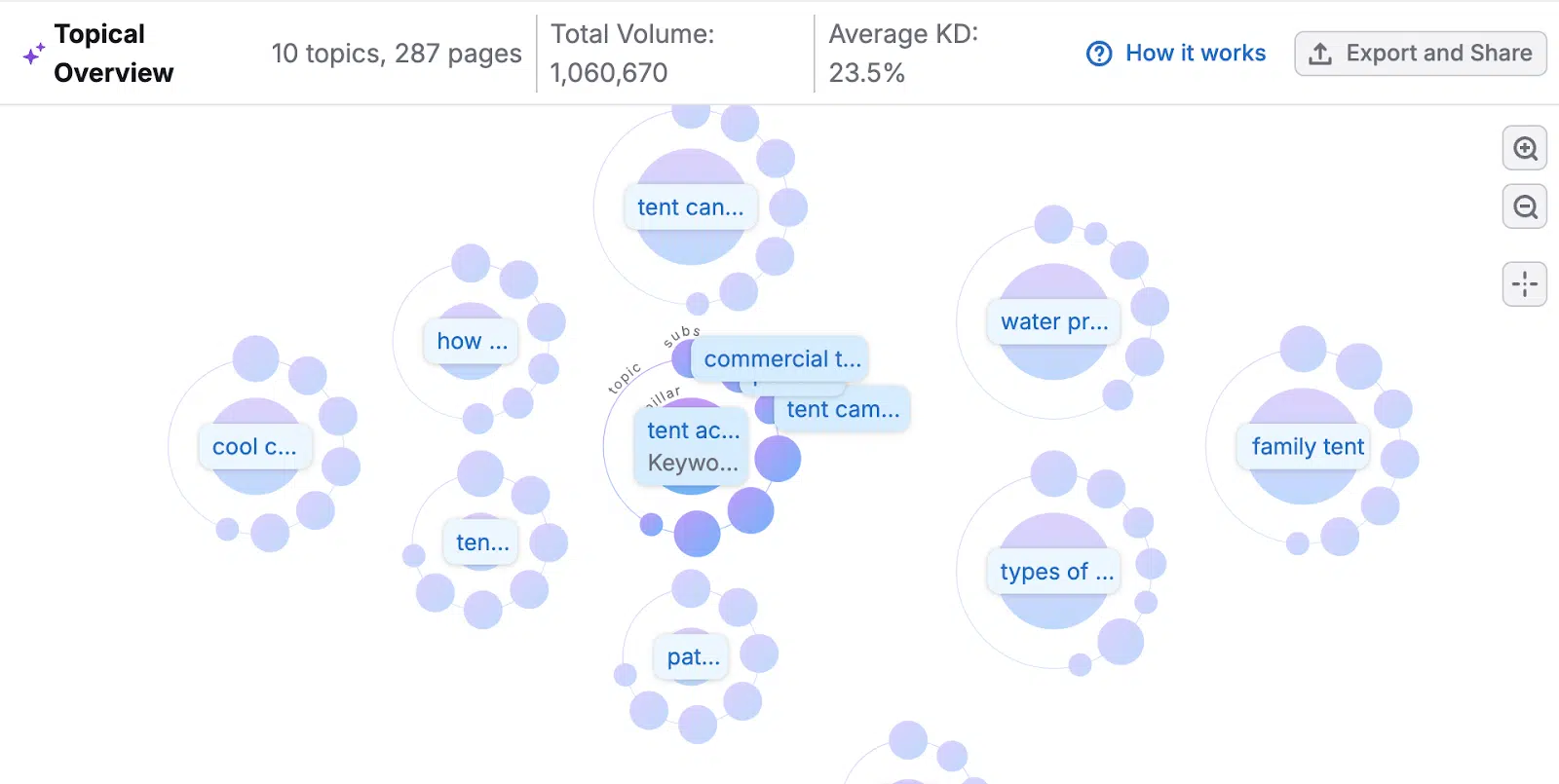
There are a few sub-pillars that caught my attention.
For “tent cleaning,” we could have several pieces of content underneath that cover:
- Tent cleaners.
- How to clean a moldy tent.
- Cleaning tent canvas.
- Tent oder eliminator.
- How to dry a tent.
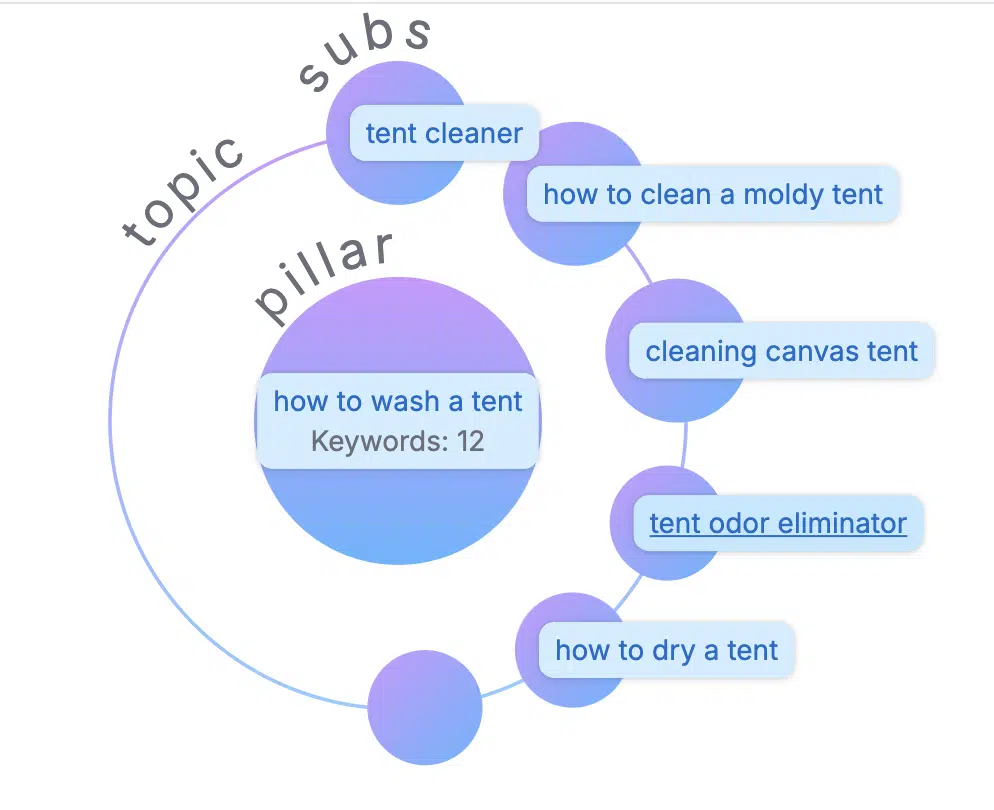
When you hover over each subtopic, it will give more information about the suggested topic.
For example, “tent odor eliminator” has a few hundred searches per month, five related keywords and a very low keyword difficulty score of 17.
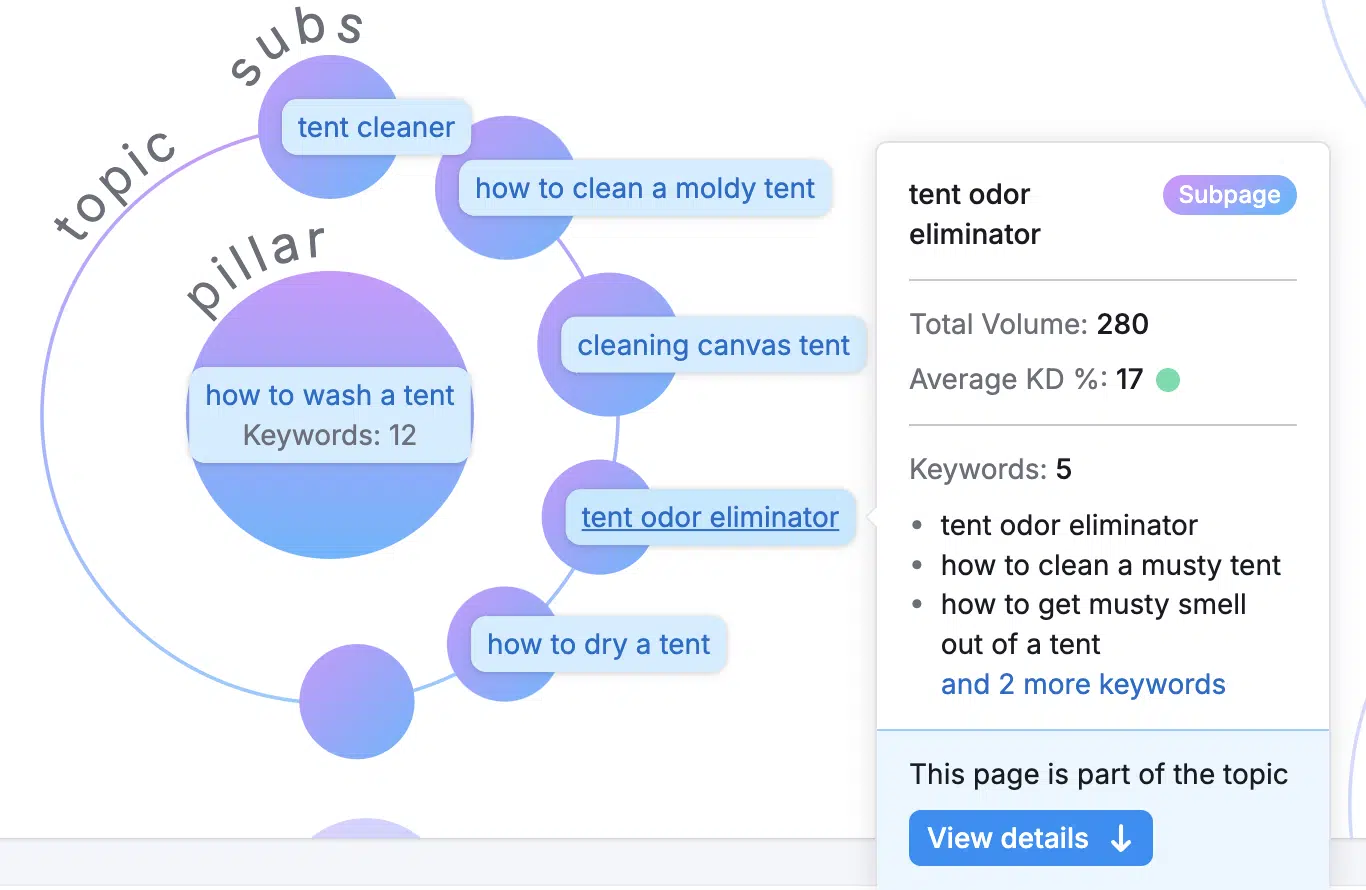
Another sub-pillar example is “tent accessories.”
Under this, we can have supporting content such as:
- Tent stakes.
- Tent poles.
- Tent patch kit.
Some of these keywords show great promise. For example, “tent patch kit” has ~1,800 monthly searches and a difficulty score of 10.
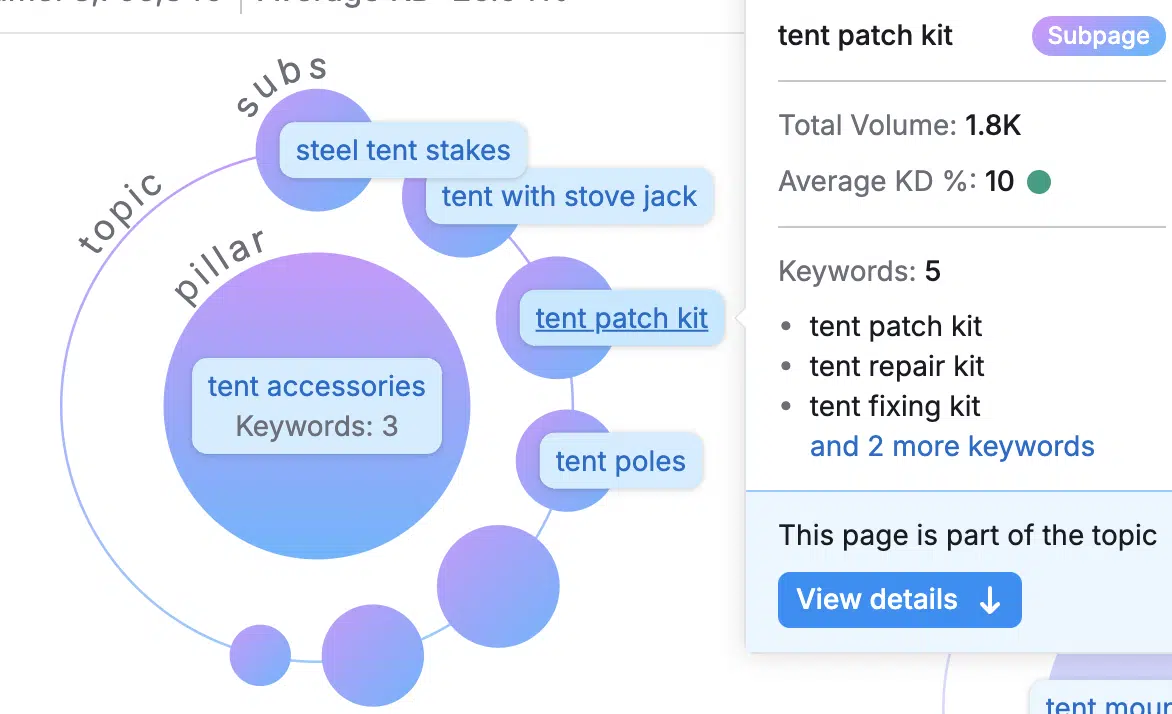
You can edit your seed list to identify other pillars you want to pursue as you go through this.
If these pillars aren’t on the initial output from the Keyword Strategy Builder, you can update the seed list to hone in on specific topics.
From this example output, I already have two sub-pillars and supporting content to create:
- Pillar: Tents
- Sub-pillar: Tent accessories
- Supporting content
- Tent patch / repair kits
- Tent stakes
- Tent poles
- Supporting content
- Sub-pillar: Tent cleaning
- Supporting content
- Tent cleaners
- How to clean a moldy tent
- Cleaning tent canvas
- Tent oder eliminator
- How to dry a tent
- Supporting content
- Sub-pillar: Tent accessories
Once this content is written, you can implement an internal linking strategy that benefits both users and SEO.
The pillar page will link to all the sub-pillar pages, and each sub-pillar page will connect to the supporting content.
For instance, if users want to learn more about tents, they can explore topics like tent accessories, tent cleaning and other related content.
This provides users valuable information and positions your website as a thought leader.
Educate, engage and convert your audience with content pillars
By investing in this type of content strategy, you can expect a few key benefits:
- More website visitors: More content means more opportunities to capture traffic. Helpful content can also boost your engagement and SEO performance.
- Higher conversion rates: The more trustworthy and helpful the website is, the higher the conversion rates you can expect.
- Higher average order values: By educating the consumer, they may end up buying more. In this example, a user may buy the tent and invest in cleaning supplies and accessories by reading up on these topics.
Now it’s your turn to become an industry thought leader by building content pillars!
Contributing authors are invited to create content for Search Engine Land and are chosen for their expertise and contribution to the search community. Our contributors work under the oversight of the editorial staff and contributions are checked for quality and relevance to our readers. Search Engine Land is owned by Semrush. Contributor was not asked to make any direct or indirect mentions of Semrush. The opinions they express are their own.
